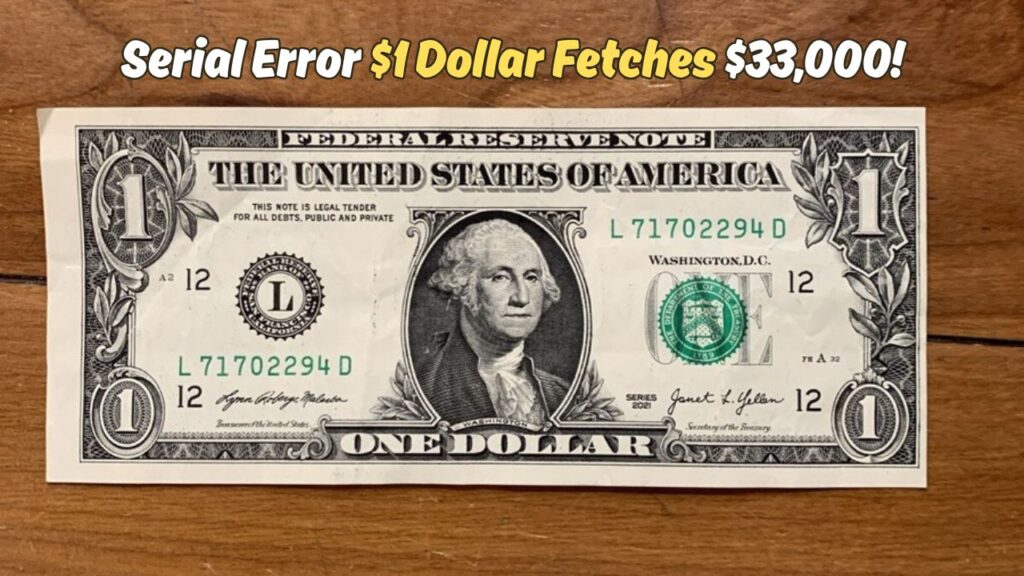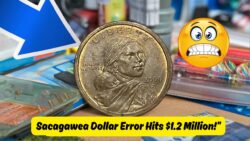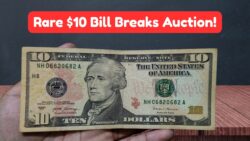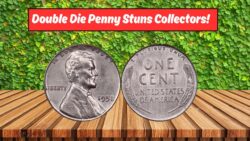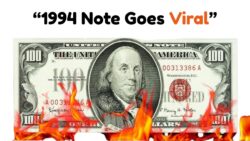1969 $1 Bill – In the world of numismatics (currency collecting), rare errors can turn an ordinary $1 bill into a fortune. That’s exactly what happened when a 1969 $1 Federal Reserve Note with a bizarre serial number error fetched a jaw-dropping $33,000 at auction. If you’re wondering whether one of your old bills could be just as valuable, this article breaks down everything you need to know—from what the error was, to how you can spot similar notes in your own collection.
What Made This 1969 $1 Bill So Valuable?
A $1 bill from 1969 might not sound particularly exciting, but the value of this specific note wasn’t in its age—it was in its printing error. The bill that sold for $33,000 featured a serial number mismatch, an extremely rare type of misprint.
Key Features of the Error Bill:
- Series Year: 1969
- Denomination: $1 Federal Reserve Note
- Error Type: Serial number mismatch (each side of the bill had different serial numbers)
- Condition: Almost Uncirculated (AU)
- Auction Price: $33,000
These kinds of mismatches happen when the serial number plates on the printing press are misaligned or improperly loaded—resulting in the left and right serial numbers not matching.
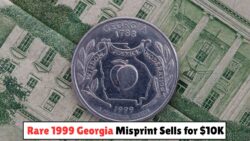 This 1999 Georgia Quarter With Misprint Just Hit $10,000 at Auction – Still in Circulation!
This 1999 Georgia Quarter With Misprint Just Hit $10,000 at Auction – Still in Circulation!
Types of Serial Number Errors You Should Watch Out For
Serial number errors are among the most valuable misprints in the currency world. Here are a few types that can fetch high prices:
| Error Type | Description | Approx. Value Range |
|---|---|---|
| Mismatched Serial Numbers | Left and right numbers differ | $500 – $35,000 |
| Duplicated Serial Numbers | Two bills printed with the exact same serial number | $1,000 – $20,000 |
| Missing Serial Numbers | Serial numbers missing from one or both sides | $500 – $10,000 |
| Misaligned Serial Numbers | Numbers printed off-center or tilted | $50 – $500 |
| Star Notes with Errors | Star replacement notes that also feature printing errors | $300 – $5,000 |
| Inverted Numbers | Serial numbers printed upside down or reversed | $200 – $3,000 |
| Color Errors | Serial numbers printed in incorrect color (e.g., black instead of green) | $100 – $1,000 |
How to Identify a Rare $1 Bill in Your Collection
You don’t need fancy equipment to spot valuable errors. Here’s what to do:
Step-by-Step Checklist:
- Compare Both Serial Numbers – Ensure the left and right serial numbers match exactly.
- Look for Star Notes – A small star at the end of the serial number indicates a replacement note.
- Check for Color or Position Errors – Misaligned or strangely colored numbers can be worth money.
- Use a Magnifying Glass – Tiny misprints, ink smears, or alignment mistakes are easier to spot.
- Research Online – Use forums or currency error databases to see if your bill has known errors.
- Consult a Professional Grader – Companies like PMG or PCGS can officially certify the error and value.
Why 1969 Notes Are Special Among Collectors
While not every 1969 $1 bill is valuable, they hold special appeal due to their vintage design and historical context. Here’s why collectors keep an eye on them:
- Printed shortly after the U.S. went off the silver standard
- Part of the transition into modern paper currency styles
- Series 1969A, 1969B, 1969C, and 1969D all exist, offering multiple variations
Some of these were printed at different facilities and used different seals and fonts—making errors more likely and thus more collectible.
Real-Life Examples of Valuable $1 Bill Sales
| Year | Note Description | Final Auction Price |
|---|---|---|
| 1969 | Mismatched Serial Number (this case) | $33,000 |
| 1977 | Inverted Star Note | $12,500 |
| 1981 | Double Printed Serial Number | $9,800 |
| 2003 | Missing Serial Numbers | $6,200 |
| 1995 | Duplicate Serial Numbers (run of 10) | $15,000 |
These are just a few examples of how seemingly insignificant bills can become highly valuable through the eyes of collectors.
Where Can You Sell or Appraise Error Notes?
If you think you’ve found a similar note, here are your best next steps:
Trusted Auction Houses:
- Heritage Auctions
- Stack’s Bowers
- Lyn Knight Currency Auctions
Trusted Grading Services:
- PMG (Paper Money Guaranty)
- PCGS Banknote
You can also post on dedicated forums such as:
- Collectible Currency Forum
- Coin Community
- Reddit’s r/papermoney
Make sure to post clear images of both sides and close-ups of the serial numbers.
The 1969 $1 bill that sold for $33,000 proves that valuable treasures might be hiding in your wallet or old drawer. With a little attention and research, even the most ordinary-looking bills can turn into extraordinary profits. If you have old currency lying around, now’s the time to look closely—it could be your ticket to a small fortune.
FAQs
Q1. What is a serial number mismatch on a bill?
A1. It’s when the two serial numbers printed on a bill (left and right) are different—this is a rare printing error.
Q2. Are all 1969 $1 bills worth a lot?
A2. No, only those with rare errors like mismatched serial numbers or star replacements have high value.
Q3. How can I get my bill officially appraised?
A3. You can send it to professional grading companies like PMG or PCGS for certification and evaluation.
Q4. Can I find valuable error bills in circulation today?
A4. Yes, although rare, error notes do occasionally slip into circulation. Checking older bills is worth the effort.
Q5. Are star notes from 1969 valuable on their own?
A5. Yes, some star notes can be valuable, especially if they’re in good condition or combined with an error.

